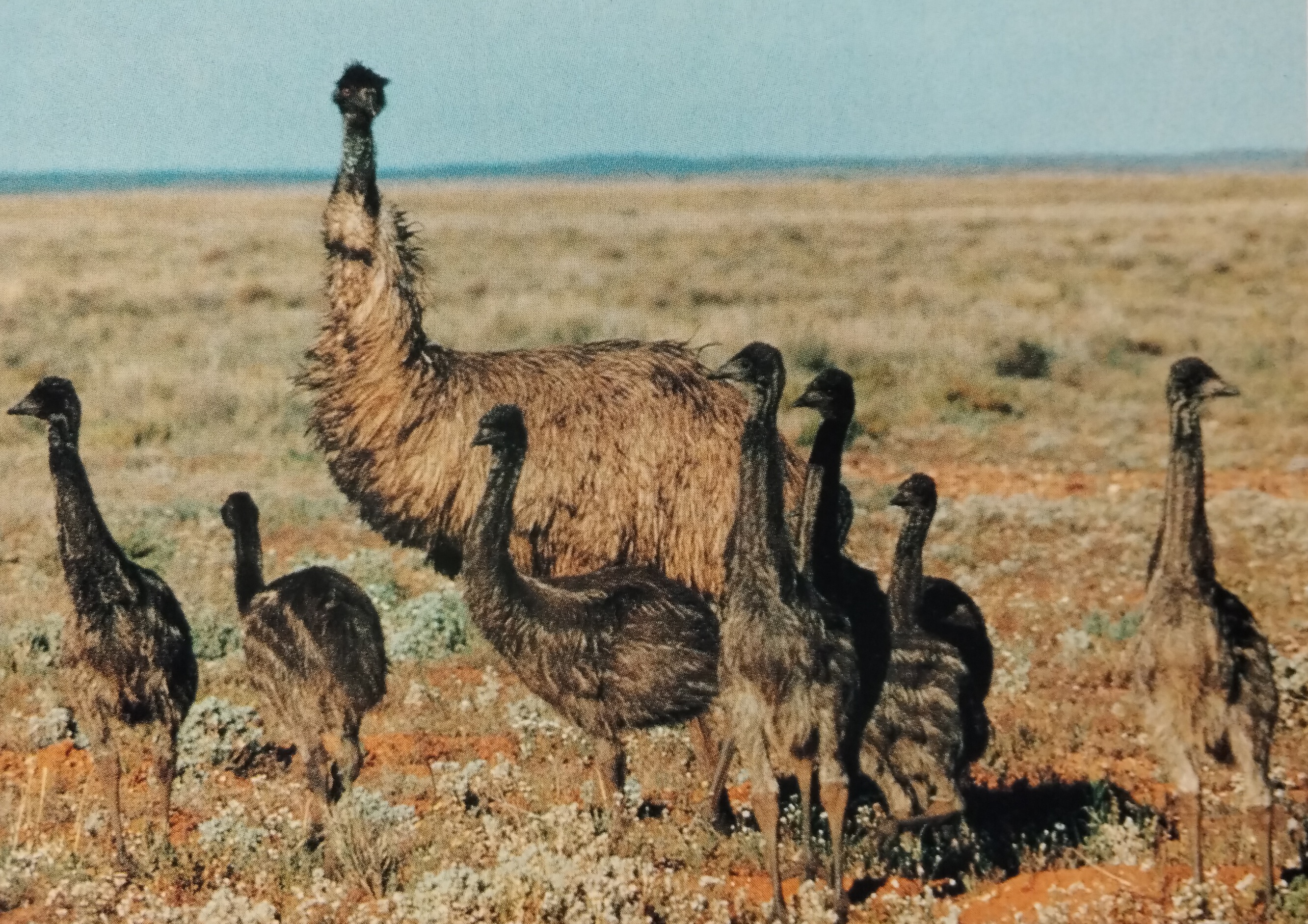Emu
| Emu | |
 | |
| An emu with chicks | |
| Classification | |
| Genus | Dromaius |
| Species | novaehollandiae |
| Taxonomy authority | |
| Authority | (Latham, 1790) |
| Population and conservation | |
| Status | LC |
The emu (Dromaius novaehollandiae) is the largest flightless bird native to Australia and the second-largest living bird by height, after the ostrich. It inhabits most of mainland Australia except rainforests and very arid deserts.
Description
An adult emu stands about 1.6 to 1.9 metres tall and can weigh up to 45 kilograms. Females are generally larger than males, but both sexes are otherwise virtually identical. The emu is a nomadic bird, moving seasonally in search of food. It primarily feeds on green herbage, seeds, and insects.
Behavior and Reproduction
Emus are sexually mature at about two years of age. Pairs form in late summer, and the relationship lasts around five months. During this time, 7 to 11 eggs are laid, which are incubated solely by the male. The eggs hatch after approximately 60 days. Once the chicks hatch, they stay with the male and join wandering groups.
Distribution and Habitat
The emu is common throughout Australia except in densely populated areas. It prefers grassland, savannah, and open forest habitats. While it once inhabited Tasmania, Kangaroo Island, and King Island, it has been extinct in these areas since the early years of European settlement.
Conservation Status
The emu is classified as a species of "least concern" due to its wide distribution and stable population. It is estimated to inhabit more than 1 million square kilometers.[1]
